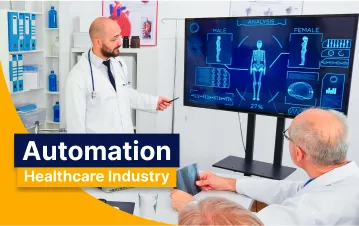Mobile app development has been around since the mid-1990s, but it has changed drastically since then. Over the years, developers have had to adapt to new technologies and frameworks in order to keep up with consumers’ needs.
Worldwide, the mobile application market size is poised to grow by $653.91 billion during 2021–2025, growing at a compound annual growth rate (CAGR) of almost 21% during the forecast period. (Technavio)

Keep in mind that the right framework depends on your project requirements and preferences. Moreover, to make adequate use of the frameworks in mobile app development, you can hire mobile app developers from a faithful mobile app development company.
Let’s get started!
Swiftic
Swiftic is one of the excellent mobile app development frameworks that use Apple’s new programming language, Swift. This framework can be used for more than just developing iOS apps. It can also be used to create MacOS applications, watchOS applications, and tvOS applications.
This is one of its biggest benefits over other frameworks in that it has widespread applicability for all of Apple’s platforms. It uses a common syntax across all platforms and facilitates cross-platform functionality between iOS and OS X/watchOS/tvOS as well.
Some Of The Significant Features Are
- Interesting push notification
- Create your mobile store
- In-app coupons
- Become a loyal shopper with a loyalty card
- Use scratch cards to win prizes
- Simple Communication
- Menu & Ordering
- App Promotion
- Social & Media Feeds
- Customer Engagement
- App Publication Assistance
- Third-party integration
- Advanced Analytics
ValueCoders experts can enhance your mobile app development projects.
Native Scripts
NativeScript is not a cross-platform framework; it’s for building native apps with Angular 2. If your goal is to build truly native apps that use native components and APIs, then NativeScript could be a good option. Of course, you’ll still have to write separate code for each platform.
You’ll also need to learn how to use two different languages (JavaScript for your web and mobile development skills will only take you so far). However, if you want a full-stack mobile development solution that gives you access to native components and APIs on both iOS and Android, then NativeScript may be worth looking into.
Some Of The Native Scripts Features Are
- Cross-platform app development
- Native user interface without WebViews
- Mission-critical business support
- Full direct access to Android and iOS APIs
- Robust backend support
React Native
React Native is a framework that permits mobile app developers to build applications using JavaScript. These applications can be run on iOS, Android, and Windows Phone. React Native makes use of gestures and motion events to create native apps with a smooth 60 frames per second (FPS) performance.
Its high efficiency means it doesn’t require as much computing power as some other frameworks do. Additionally, it can be used to build mobile apps through its integration with Facebook’s popular React JavaScript library.
Further solidifying its position on our list of top mobile app development frameworks is its user interface (UI). React Native enables developers to write once and deploy everywhere without having to worry about cross-platform compatibility issues.
Some Of The React Native Features Are
- Hot Reloading
- Native Modules & Components
- Cross-platform Support
- Faster Development Cycles
- Declarative UI
- Code Reusability
Collaborate with ValueCoders to find the perfect development solution.
Xamarin
From a developer’s perspective, Xamarin is a very effective way to build applications that target mobile platforms. Xamarin has an extensive collection of tools and components that mobile app programmers can use to create native apps for Android, iOS, Windows, and other operating systems.
It uses the C# language as its default programming language and supports a broad range of APIs provided by each platform. The fact that it runs on .NET Framework also makes it more secure than some other frameworks.
Overall, it’s great for developing cross-platform mobile apps with minimum effort. We think it works best for building line-of-business enterprise applications, so if you are looking to create consumer apps, then you may be better off with something else (although you should still consider using Xamarin).
Some Of The Xamarin Features Are
- Write Once, Deploy Everywhere
- Native Performance and Look-and-Feel
- Broad API Coverage
- Android SDK manager
- Storyboard files
- C# as Default Language
- .NET Framework Support
Also read: Why HTML5 is Useful for Mobile Development
Corona SDK
The Corona SDK gives developers a way to create native apps for iOS and Android using a single code base. The platform uses Lua, an industry-standard scripting language, which allows developers to use familiar coding methods to build mobile applications.
Corona is designed to help make developing mobile apps faster and easier, so it’s ideal for both indie app makers and big-name development firms. The platform can produce everything from simple games to complex financial applications.
If you’re interested in testing it out, there are free trial options available that give you access to all of its functionality. One limitation of Corona is that it isn’t compatible with Windows devices; otherwise, there aren’t any other downsides worth mentioning as far as platforms go (no web or desktop support).
Some Of The Corona Sdk Features Are
- Fast Development
- Native Performance
- One Code Base
- Lua Scripting Language
- Free Trial Available
- Strong API support
Sencha Ext JS
Sencha is a high-level framework that enables mobile developers to create mobile apps that can be viewed in either HTML5 or native app environments. Ext JS offers a number of valuable advantages for developers, and for those who are new to Sencha, it’s an ideal choice.
In addition, mobile developers may be interested in developing interactive and animated user interfaces, along with access to remote data stores.
Sencha includes powerful features like drag-and-drop form builders and spreadsheet editors, allowing you to easily bring your idea to life using standard programming languages like JavaScript and HTML5.
Moreover, Ext JS boasts top-tier performance, and it’s capable of managing large amounts of information at once — even if your application deals with thousands of users at one time.
Dive into the future of app development with these frameworks.
Some Of The Sencha Ext Js Features Are
- HTML, and JavaScript Code
- Cross-Platform Support
- Visual data representation
- Large Data Management
- Performance and Scalability
- Rich User Interfaces
- Robust analytics
- Flexible layout system
PhoneGap
Apache Cordova, which is now just known as PhoneGap, is one of the popular mobile app development frameworks. It enables developers to build apps using their existing mobile development skills like HTML, CSS and JavaScript and has rapidly become popular among enterprises as well as startups.
PhoneGap allows mobile app developers to access APIs from various devices like cameras, sensors, and notifications. Android uses Java for native application programming, whereas for iOS, it’s Objective-C or Swift. PhoneGap provides a framework that makes it easy to create applications for both Android and iOS platforms simultaneously.
But, it also allows users to develop an app without writing code since they can use various technologies along with a native wrapper overall operating system.
Some Of The Phonegap Features Are
- Code-Free Development
- Access to Device APIs
- HTML, CSS, and JavaScript Support
- Rapid Enterprise Adoption
- One Codebase for All Platforms
Ionic
The Ionic Framework is one of a few mobile app development frameworks that can help you build native apps for iOS, Android, and Windows devices. It’s easy to use and provides compatibility with AngularJS, jQuery Mobile, Bootstrap CSS and Sass.
It uses Google’s Web Toolkit (GWT) to convert source code into JavaScript so it can be run on browsers. With Ionic Framework, you can also easily create hybrid apps which are typically cross-platform (one codebase).
Most hybrid apps don’t feel like native apps because they still have something called web view that renders websites as if they were native. There is an effort within Microsoft to replace web views with actual browser controls though that hasn’t been released in final form yet.
Some Of The Ionic Features Are
- Instinctive UI components
- More rapid development time
- Powerful & stable development platform
- A strong community of 5 Million developers
- Entire control over app building
Also Read: Hybrid Mobile App Development Benefits For Small Businesses
Flutter
Build beautiful native apps with consistent behaviour, identical to that of Android and iOS apps.
Flutter’s reactive framework, called Hot Reload, allows code changes to take effect immediately on your mobile device without requiring a full restart. Design native interfaces using super-fast rendered widgets with Material Design, Apple iOS, or Google Material Design.
Today, Flutter supports two major platforms: iOS and Android, which makes it easier for developers who want to build user interfaces in one codebase and deploy their mobile applications on multiple stores.
While Flutter is extremely fast (in terms of rendering) when compared to other cross-platform development frameworks like React Native or Xamarin, one must be aware that Flutter does not support any third-party platform integrations at present.
Some Of The Flutter Features Are
- Built-in material design
- Built-in Cupertino (iOS-flavor) widgets
- Decadent motion APIs
- Strong widget support
- High-performance app
Also Read – 12 Top JavaScript Mobile Frameworks To Know
Appcelerator Titanium
It is an open-source mobile app development framework based on JavaScript and WebKit, which is designed to create mobile applications. Developers can use Titanium to build iOS and Android apps with a single code base.
The framework will be available free of charge as an Apache 2.0 licensed open source project. This framework helps you make your own hybrid mobile app, which runs on multiple devices or platforms such as Android and iOS at once.
One of its key features is that it allows developers to extend functionality by adding plugins written in Python and Java. However, one drawback with Titanium is that it only supports select versions of operating systems and devices.
Some Of The Appcelerator Titanium Features Are
- One codebase for all platforms
- Flexible and extensible
- Native app performance
- Market-leading tooling & services
Consult with ValueCoders for insights into selecting the right framework.
Conclusion
As you can see, there are a variety of mobile app development frameworks to choose from — each with its own set of benefits and drawbacks.
It ultimately comes down to the needs of your project and the preferences of the mobile app programmers. Hopefully, this blog has given you a good overview of some of the most popular frameworks currently in use.
Still not sure which framework is right for you? Get connected with the best mobile app development company (ValueCoders). Our team of devoted mobile app developers can help you determine the best solution and mobile app development framework for your specific needs.
Which mobile app development framework will you be using for your next project? Let us know in the comments below!





